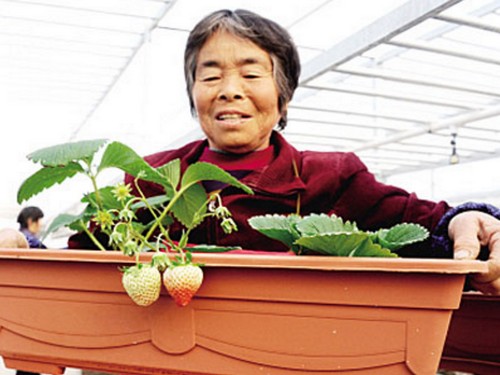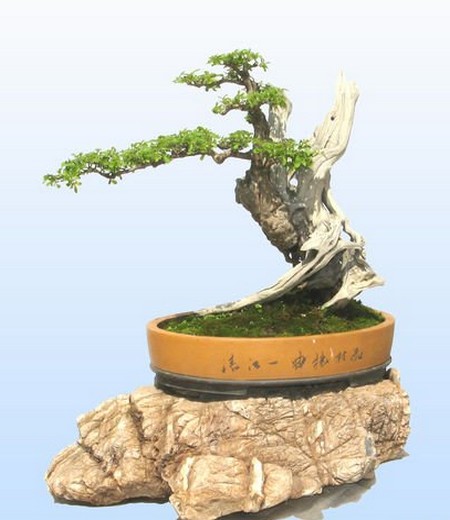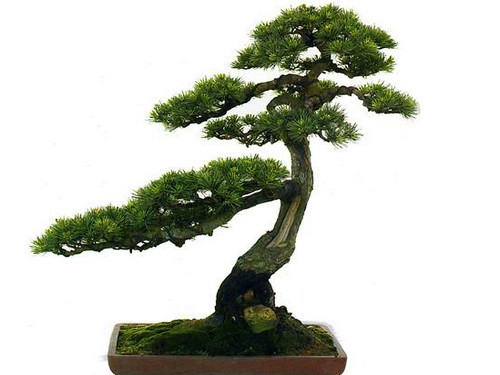The method of making strawberry bonsai
Yesterday morning, Xu Peiying, a member of the professional cooperative of Haifeng Farm, showed the strawberry bonsai they planted. The cooperative has planted more than 3000 pots of strawberries in the seedling raising greenhouse. At present, the strawberries in the bonsai have begun to blossom and bear fruit, and the whole greenhouse exudes a faint sweet smell. According to reports, a pot of strawberries bonsai can bear 2 jin of strawberries, which can be sold as bonsai and can be sold for about 80 yuan.

Strawberry is not only delicious, but also a potted plant with high ornamental value, which is a combination of leaf, flower and fruit.
1. The advantages of potted plants: strawberry fruit is fragrant and refreshing, the color is bright and ruddy, and the fruit shape is elegant and beautiful. After potted, the plant type is petite and the ornamental period of hanging fruit is long. White flowers, green leaves and red fruits set off each other and are placed in the bedroom (white plastic pots can be covered with mud pots for beauty). The ornamental effect is the same as flowers, and edible, killing two birds with one stone.
2. Variety selection: strawberry is a perennial evergreen herb of Rosaceae. There are many varieties suitable for potted plants. It is appropriate to choose varieties with shallow dormancy, good fruit shape and strong aroma. Such as Darth Lecter, Fengxiang, Jingxiang, Teda No. 1 and so on.
3. Preparation of basin soil: high quality vegetable garden soil, rotten leaf soil and organic fertilizer are selected and mixed according to the proportion of 3: 1: 1. Do not choose the soil that has been planted with strawberries during preparation to prevent the occurrence of continuous cropping diseases.
4. Pseudo-planting: strong seedlings were selected in mid-late August and planted in small flowerpots. Strawberry seedlings are required to have three leaves and one core, and their roots are well developed. 1 to 2 mm thick, the cultivation depth should be shallow without revealing roots and deep without immersion. After planting, put it in the shade and slow the seedling for about 5 days.
After slowing down the seedlings, keep the basin soil dry and wet in the sun, but not too dry, so as not to affect growth. During the false planting period, control nitrogen fertilizer, increase phosphorus and potassium fertilizer, cultivate strong seedlings, fertilization concentration is generally 0%, 2%, once every semimonthly.
5, planting: at the beginning of October, planted in a flowerpot with a diameter of about 20 cm, first use tiles to cover the bottom, take the culture soil into the pot, slightly compacted, the height is half of the height of the flowerpot.
Then take 3 to 4 strawberry seedlings, bow back outward planting, because the strawberry flowering and hanging fruit direction is the same as the bow back direction, so this can make the flower and fruit exposed outside the flowerpot, the fruit coloring is uniform, neat and beautiful. Pour water once after planting to slow down the seedlings.
6. Post-planting management: water plays an important role in the growth of strawberry. After planting, the basin soil must be kept moist and not dry, so that small water can be watered frequently to make the plant grow healthily. After slowing down the seedlings, water the dilute bean cake every half a month or so until the bud appears. When watering, slowly pour in from the lower part of the leaf to keep the leaf clean and beautiful.
7. Flower and fruit stage management: gibberellin was sprayed once in late October to promote flower bud differentiation. Thinning flowers and fruits in time after budding. Remove small, rotten, diseased, malformed flowers and fruits, as well as lateral buds protruding from the axils of leaves, remove old and diseased leaves, and increase ventilation and light transmittance.
8. Management after hanging fruit: after hanging fruit, the lateral buds are no longer removed, but 3 to 5 lateral buds are retained to form stolons, which are cultivated and ornamental indoors.
Time: 2019-05-26 Click:
- Prev

The making method of Bauhinia bonsai
Bauhinia, deciduous shrubs or small trees, Verbenaceae, Bauhinia, there are about 200 species of this genus, Bauhinia is one of them. Bauhinia is a good tree species for making and cultivating bonsai. Bauhinia can make various forms of tree stump bonsai
- Next

Production method of black pine bonsai
Black pine bonsai has a strong ability to adapt to the environment, courtyard and balcony can be cultivated. Its branches spread horizontally, the crown is like an umbrella cover, the needles are dark green, the four seasons are evergreen, and the tree posture is quaint and elegant, which can be appreciated all the year round. During the growth period, it should be placed outside where there is plenty of sunshine and air flow, but not indoors for a long time.
Related
- Fuxing push coffee new agricultural production and marketing class: lack of small-scale processing plants
- Jujube rice field leisure farm deep ploughing Yilan for five years to create a space for organic food and play
- Nongyu Farm-A trial of organic papaya for brave women with advanced technology
- Four points for attention in the prevention and control of diseases and insect pests of edible fungi
- How to add nutrient solution to Edible Fungi
- Is there any good way to control edible fungus mites?
- Open Inoculation Technology of Edible Fungi
- Is there any clever way to use fertilizer for edible fungus in winter?
- What agents are used to kill the pathogens of edible fungi in the mushroom shed?
- Rapid drying of Edible Fungi

